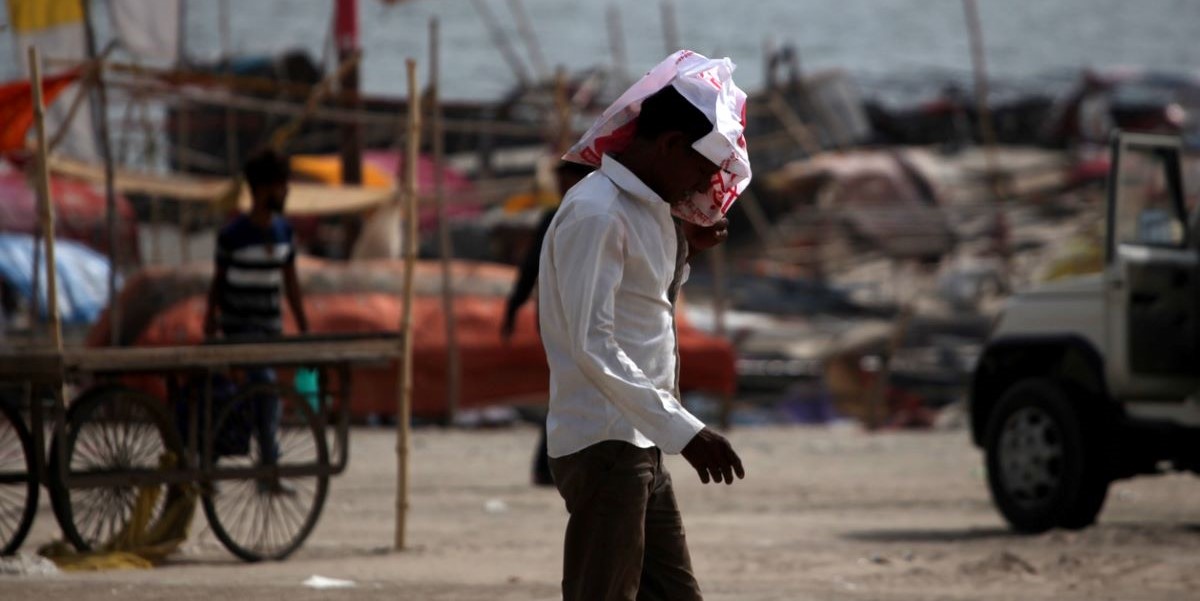Recent temperature rise in Hyderabad has turned the city into an Urban Heat Island (UHI), with higher temperatures than surrounding rural areas. Telangana's Socio Economic Outlook 2025 report acknowledges this phenomenon
Published Mar 21, 2025 | 7:00 AM ⚊ Updated Mar 21, 2025 | 7:00 AM

Heat wave. (iStock)
Synopsis: In recent years, Hyderabad has become an Urban Heat Island (UHI), experiencing higher temperatures than surrounding rural areas. The Telangana government acknowledged this in its Socio Economic Outlook 2025 report. UHI is caused by factors like increased human activity, reduced green cover, and pollution. Telangana’s tropical climate and urbanisation make its cities more susceptible to this phenomenon.
A few years ago, people in Hyderabad talked about the chill they used to feel in January. Now, most of them complain that they feel bad that they can’t even get a chance to wear a good sweater during the winter.
Well, the rise in temperature in Hyderabad in recent past years has made the city, an Urban Heat Island(UHI)— a phenomenon where urban areas experience significantly higher temperatures than their surrounding rural regions.
In its Socio Economic Outlook 2025 report which was released on 19 March, even Telangana government has accepted this phenomenon which is causing the increase the temperature.
UHI is caused by several factors such as human activities, concentrated infrastructure, reduced green cover, heat absorption by urban materials, reduced surface water, lack of airflow, increased energy consumption and pollution.
“Telangana generally experiences a tropical climate, characterised by its geographical location in a semi-arid region with predominantly hot and dry conditions. Hence, the state’s urban areas are vulnerable to the UHI effect,” reads the Socio-Economic report.
Telangana government mentioned in it’s report after the ‘Urban Heat Stress Tracker- Hyderabad’ Document published by the Centre for Science and Environment (CSE), highlighted the growing intensity of UHI effects in Hyderabad and other urban areas of Telangana.
The report states a 1°C increase in temperature for March-April 2024 compared to the 2014-23 average, with humidity levels rising by 10 percent over the last two decades. This added moisture in the air, has led to an increase in the city’s heat index, making it feel 1.5°C hotter on average.
The report states that Hyderabad is not cooling down at night as effectively as it used to, with the gap between daytime and nighttime temperatures shrinking by 13 percent.
“In the last ten summers (2014-23) the nighttime cooling has reduced to 11.5°C. But between 2001-10, the temperature used to decrease by average 13.2°C,” reads the report.
“Hot nights are as dangerous as midday peak temperatures. People get little chance to recover from daytime heat slaughter if temperatures remain high overnight, exerting prolonged stress on the body. A study published in the Lancet Planetary Health by a group from Japan, Germany and the U.S., noted that the risk of death from excessively hot nights would increase nearly six-fold. This prediction is much higher than the mortality risk from daily average warming suggested by climate change models,” points the report.
It also points that Hyderabad’s core is 0.7°C cooler than its outskirts during the day, it becomes 1.9°C hotter at night, trapping heat within concrete structures.
Concrete expansion has more than doubled, from 20.6 percent in 2003 to 44 percent in 2023, contributing to rising urban heat stress.
Hyderabad experiences 30-90 days each summer when temperatures exceed 37°C, making heat waves more frequent and severe.
Although green cover has increased from 8.9 percent in 2003 to 26.5 percent in 2023, it has not been enough to offset nighttime warming and humidity-driven heat stress.
“There is direct co-relation between increase in built stress. Built up area has increased from 20.6 per cent in 2003 to 44.0 percent in 2023. Green cover has increased from 8.9 percent in 2003 to 26.5 percent in 2023 to 44.0 percent in 2023. Green cover has increase in green cover shows impact on daytime temperatures but has no impact on nighttime temperature and increasing heat index in the city,” reads the report.
Despite a 0.9°C drop in average summer temperatures compared to 2001-10, the study warns that Hyderabad is becoming thermally more uncomfortable due to rising relative humidity. The heat index, which measures how hot it feels based on temperature and humidity, has increased despite cooler air temperatures.
“High humidity limits the body’s ability to cool itself through sweating, increasing the risk of heat stress and heat-related illnesses,” the report states.
“The urban heat island effect is more pronounced at night, indicating insufficient cooling in the city core. Mitigation strategies are essential to address the environmental and socio-economic challenges posed by urbanisation and climate change. Telangana has taken proactive steps to implement these strategies through innovative policies and programs,” said the government.
It added that the Clean and Green Energy Policy 2025, serves as a cornerstone, focusing on renewable energy adoption, energy efficiency, and sustainable urban development. The policy strives to build cooler, greener, and more climate-resilient cities by encouraging renewable energy, enhancing energy efficiency, and fostering sustainable urban development.
(Edited by Ananya Rao)
